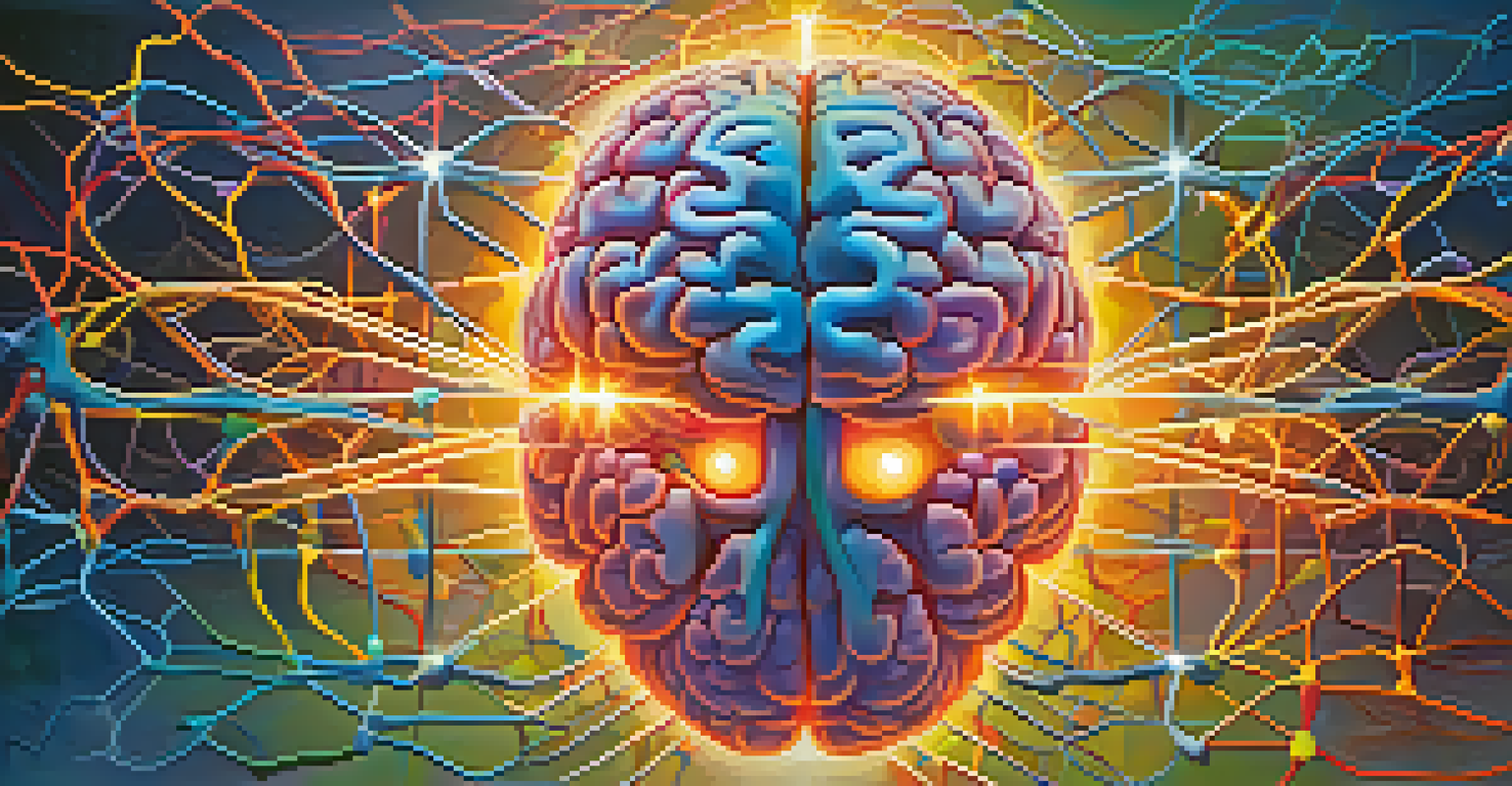Understanding the Mechanisms of Hallucinogens in Pain Relief

What Are Hallucinogens and Their History?
Hallucinogens are substances that alter perception, mood, and cognitive processes. Historically, they have been used in various cultures for spiritual and medicinal purposes. Indigenous peoples in the Americas, for instance, have utilized plants like peyote and psilocybin mushrooms for healing rituals.
The greatest discovery of my generation is that human beings can alter their lives by altering their attitudes of mind.
In recent years, the resurgence of interest in these compounds has led to numerous studies exploring their potential therapeutic benefits, particularly in pain management. This shift is partly due to the limitations of traditional pain relief medications, which can have significant side effects and risks of dependency.
Understanding their historical context helps to frame current research, highlighting a long-standing relationship between humans and these powerful substances.
The Science Behind Hallucinogens
Hallucinogens primarily interact with serotonin receptors in the brain, particularly the 5-HT2A receptor. This interaction can lead to altered perceptions and feelings, which is often what people associate with 'trips.' However, these effects may also contribute to the reduction of pain sensations.

Research indicates that the activation of these receptors can induce neuroplasticity, which is the brain's ability to reorganize itself by forming new neural connections. This neuroplasticity can play a crucial role in how we process pain and can lead to long-term changes in pain perception.
Hallucinogens and Pain Management
Research shows that hallucinogens can provide significant pain relief, offering an alternative to traditional medications.
By understanding the underlying mechanisms, scientists are uncovering how these substances can potentially rewire the brain's response to pain.
Clinical Studies on Hallucinogens and Pain Relief
Several clinical studies are currently investigating the analgesic (pain-relieving) properties of hallucinogens. For example, a recent trial found that psilocybin, a compound found in magic mushrooms, can significantly reduce chronic pain in patients. Participants reported not just immediate relief, but also lasting effects after just a few sessions.
What we call reality is a thin layer of the real world, and if we can peel that away, we can see a much larger universe.
Another area of research focuses on MDMA, known for its empathogenic effects. While primarily associated with recreational use, studies have shown potential in treating PTSD-related pain. This underscores the multifaceted nature of these substances and their potential beyond traditional applications.
These studies are critical as they pave the way for a new understanding of pain management that moves away from conventional medications.
Mechanisms of Action: Reducing Pain Perception
Hallucinogens may reduce the perception of pain by altering emotional responses and enhancing feelings of well-being. When individuals feel happier or more connected, they may experience lower pain levels, even if the underlying condition remains unchanged. This emotional component is vital in understanding how these substances can serve as effective pain management tools.
Moreover, hallucinogens can disrupt the brain's default mode network (DMN), which is linked to self-referential thoughts and rumination—two factors that can amplify pain. By quieting this network, users may find themselves less preoccupied with their discomfort, leading to relief.
The Importance of Set and Setting
The context in which hallucinogens are used greatly influences their therapeutic effects, highlighting the need for careful environments.
Thus, the interplay of emotional and cognitive factors is crucial in understanding how hallucinogens can effectively alter pain perception.
Comparing Hallucinogens to Traditional Pain Relief Methods
Traditional pain relief methods, such as opioids and NSAIDs, come with a range of side effects and the risk of addiction. In contrast, hallucinogens may offer a novel approach with fewer long-term risks, as they often lead to only temporary alterations in perception. This difference is significant in discussions about the future of pain management.
Moreover, while traditional medications typically target specific pathways, hallucinogens provide a more holistic approach by addressing emotional and psychological aspects of pain. This multifaceted mechanism could lead to more sustainable pain relief, particularly for chronic conditions.
As we compare these methods, it becomes increasingly clear that incorporating hallucinogens could revolutionize how we approach pain management.
The Role of Set and Setting in Hallucinogen Use
The concept of 'set and setting' is crucial when discussing hallucinogen use for therapeutic purposes. 'Set' refers to the individual's mindset, while 'setting' pertains to the environment in which the substance is consumed. Both factors can significantly influence the experience and its outcomes, especially in a therapeutic context.
A supportive and controlled environment can help mitigate anxiety and maximize the therapeutic benefits of hallucinogens. This is why clinical trials often take place in carefully curated settings with trained professionals, ensuring participant safety and comfort.
Future of Hallucinogen Research
Ongoing studies are paving the way for innovative treatments that may redefine pain management through tailored hallucinogen therapies.
Understanding the importance of these factors is essential for both researchers and potential users, as they can greatly impact the efficacy of treatment.
Future Directions in Hallucinogen Research
As research progresses, the future of hallucinogens in pain management looks promising. Ongoing studies are exploring various compounds and their specific effects on different types of pain, such as neuropathic pain or pain related to cancer. These investigations could lead to tailored therapies that maximize efficacy and minimize risks.
Moreover, as societal perceptions shift and regulatory barriers lower, we may see more widespread acceptance of hallucinogens in clinical settings. This could open the door for innovative treatments that integrate these substances into mainstream medicine.

Ultimately, the ongoing research could redefine pain management, offering new hope for those who suffer from chronic pain.